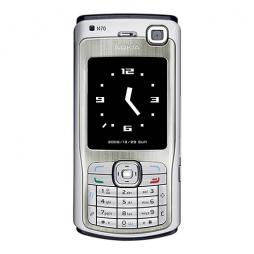malware
Posted by AnneryanHeatwole on Aug 05, 2011
Today's Mobile Minute brings you news about Apple's profit share, the Atlantic Magazine's case for texting, the launch of free SMS in Zimbabwe, a look at how mobile device users choose video apps, and a report on malware in Android's marketplace.
- PC Mag reports that Apple's iOS, despite being only 20% of the world's smartphone market, receives roughly two-thirds of mobile phone profits. The magazine breaks down the data in several charts, showing operating profits across quarters, and how operating shares have changed between 2007 and now (in Q2 2007, Apple had 1% of the market and the most popular vendor, Nokia, had 55%; by Q2 2011, Apple has 66% of the market).
- Curious about why SMS matters? Check out The Atlantic's "Why Texting is the Most Important Information Service in the World." The article pulls together a lot of statistics and real-world examples to demonstrate how SMS is used around the world. From government initiatives in the Philippines (the article reports "87 percent of Filipinos prefer communicating with the government via SMS, compared to 11 percent with an Internet-preference"), to mobile payments in Afghanistan, to agricultural info and help lines in Uganda, the piece looks at how SMS is changing the way people use their phones to interact with the world around them.
- In other SMS news, the company Free SMS Zimbabwe has launched a new initiative that combines advertising with texting. Users of the service can send an SMS with a maximum of 100 characters and the other 60 will be an advertisement; users can send 100 character SMSs for free as the company subsidizes the cost through the ads.
- When choosing mobile video apps, a Nielsen Wire survey reveals that the most important factor is "free/low subscription rates." Roughly 63% of respondents chose cost as a very important factor when choosing a mobile video application, more than other factors like video selection, presence of advertisements, or the ability to sync multiple devices.
- The 2011 Mobile Threat Report, a new study from Lookout Mobile Security, found some big security threats to Android users. eWeek reports that "Android handset users are 2.5 times more likely to be affected by malware today than they were 6 months ago, as anywhere from 500,000 to 1 million users were impacted by malware on their smartphone or tablet computer."
[Mobile Minute Disclaimer: The Mobile Minute is a quick round-up of interesting stories that have come across our RSS and Twitter feeds to keep you informed of the rapid pace of innovation. Read them and enjoy them, but know that we have not deeply investigated these news items. For more in-depth information about the ever-growing field of mobile tech for social change, check out our blog posts, white papers and research, how-tos, and case studies.]
Image courtesy Flickr user QiFei
Posted by AnneryanHeatwole on Mar 25, 2011
Today's Mobile Minute brings you coverage on smartphone security and malware, the struggle for mobile money systems in Africa to reach the level of M-PESA in Kenya, Facebook's move toward feature phones, the success of messaging-specific feature phones, and a guide to mobile donations for Japan.
- After more than 50 Android apps were discovered to be carrying malware in early March, the BBC took a look at mobile security. From the risks involved in keeping a lot of personal data on mobiles to ways in which malware can be used to manipulate phones, the article explores the need for mobile security around smartphone applications.
- In Africa, mobile banking has certainly garnered a lot of publicity and press. But All Africa looks at some of the drawbacks of mobile banking in specific countries where mobile banking systems are active; specifically, the article focuses on the "walled garden" system which makes it expensive to transfer funds between different mobile operators (sometimes with fees from five to 20 percent higher than a transfer between two users on the same mobile operator).
- Facebook recently bought Snaptu, a company that develops applications for feature phones. Snaptu developed Facebook's first feature phone app, and Facebook has now reportedly acquired the company for close to $70 million dollars. The purchase could indicate that Facebook plans to focus on reaching non-smartphone users around the world.
- Cellular-News reports that by 2015, messaging-specific feature phones will grow to encompass 1/3 of all shipped feature phones. Feature phones make up 75% of the handset market, and feature phones that are optimized for messaging services (such as "SMS, MMS, mobile email, and mobile IM") are expected to increase in popularity.
- Want to send a mobile donation to a specific cause for tsunami relief in Japan? Into Mobile has a roundup of shortcodes and the organizations that use them so that you can easily find the best way to donate.
[Mobile Minute Disclaimer: The Mobile Minute is a quick round-up of interesting stories that have come across our RSS and Twitter feeds to keep you informed of the rapid pace of innovation. Read them and enjoy them, but know that we have not deeply investigated these news items. For more in-depth information about the ever-growing field of mobile tech for social change, check out our blog posts, white papers and research, how-tos, and case studies.]
Image courtesy Flickr user QiFei
Posted by AnneryanHeatwole on Mar 07, 2011
Today's Mobile Minute features mobile app revenue, context around ICTs and revolutions in the Middle East, an infographic of the top mobile operating systems around the world, new funds for telecommunications in Iraq, and malware in the Android app store.
- A new report from Forrester Research estimates that revenue from mobile apps will reach $38 billion by 2015. The New York Times looks at the data from the report and examines what it means for the future growth of the app market.


